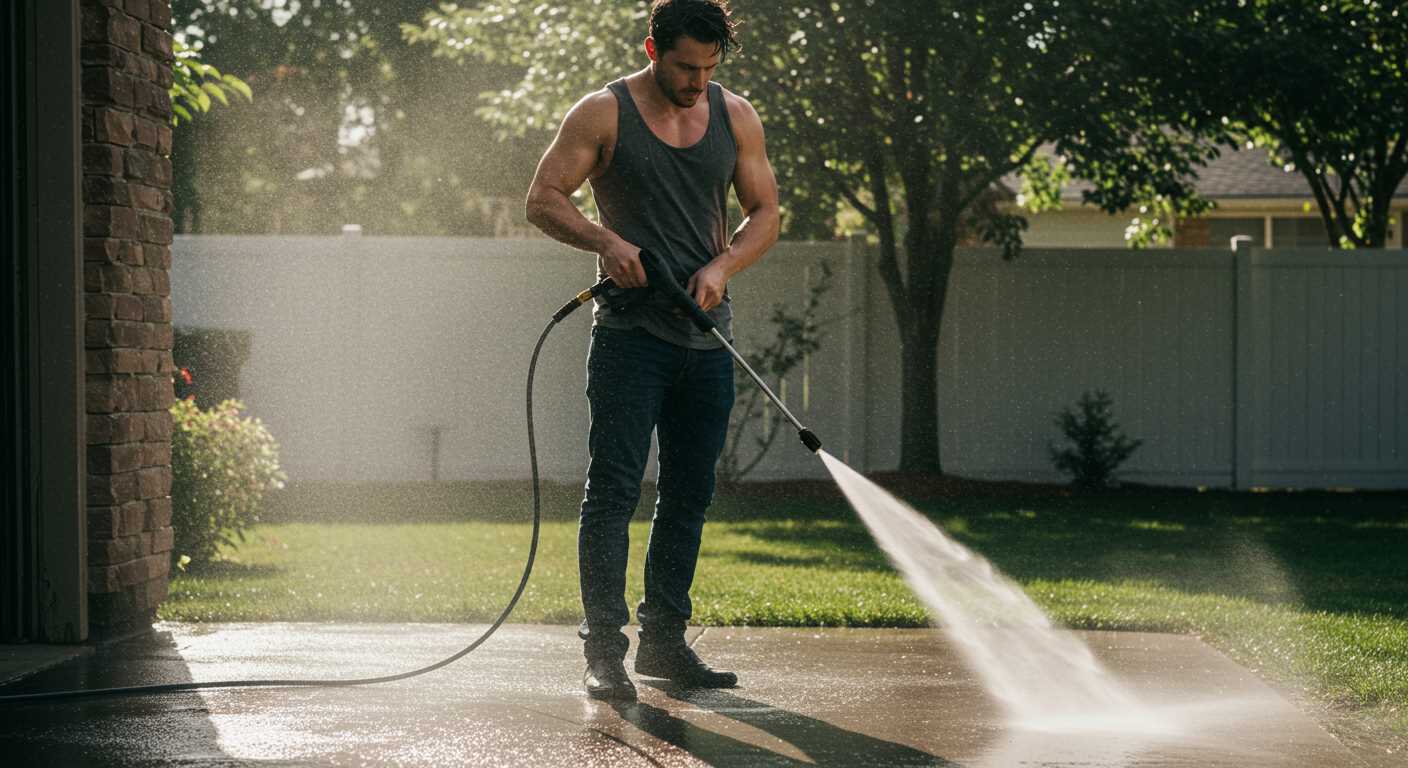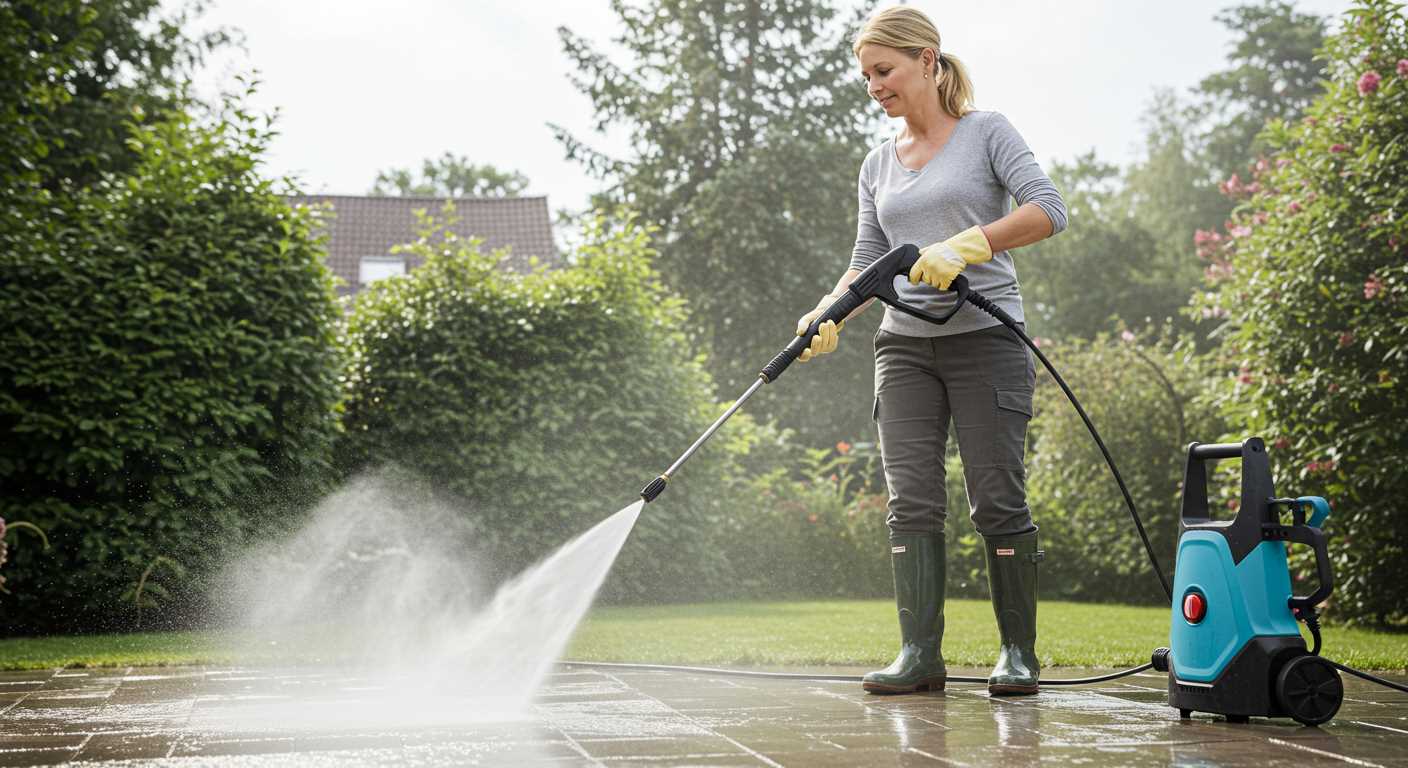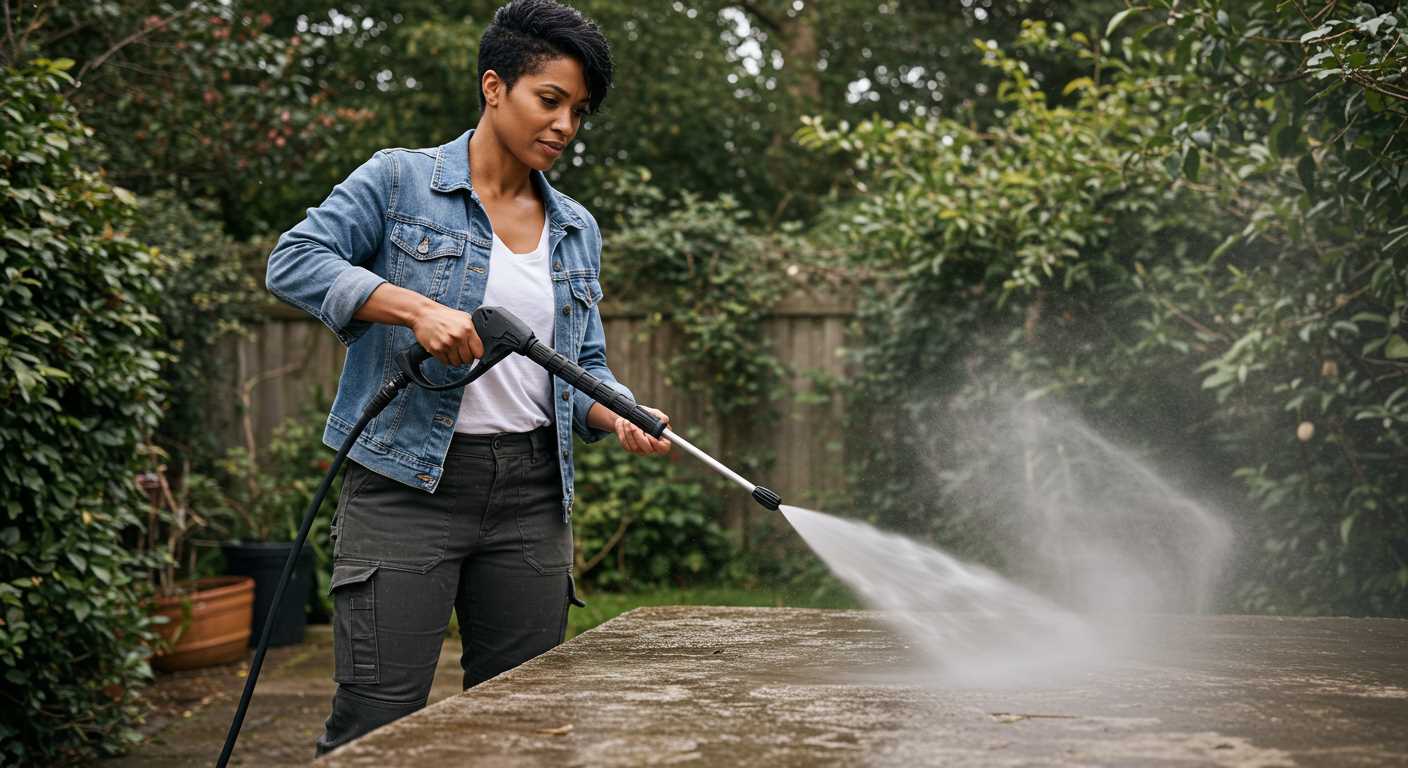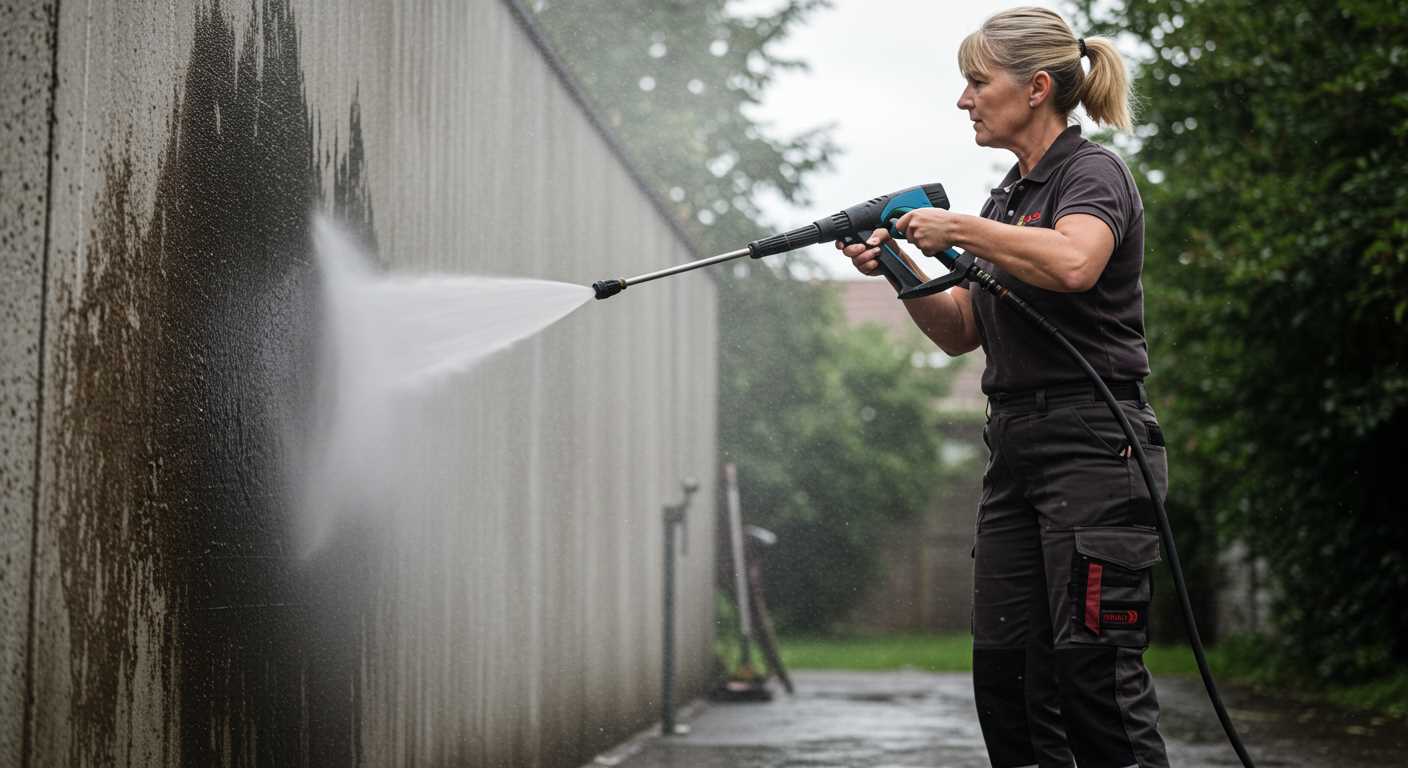



First and foremost, inspect the nozzle for clogs. A blocked nozzle can drastically reduce water flow, making it seem like the device isn’t delivering adequate power. Remove the nozzle and clean it thoroughly to restore full functionality.
Another common issue lies within the water supply. Ensure that the inlet hose is free of kinks or leaks, and verify that the source is supplying ample water. A low-flow rate from the supply can starve the appliance, leading to insufficient output.
Examine the detergent nozzle. If detergent is improperly applied or too much is used, it can create pressure loss. Switching to a cleaner method without detergent might be beneficial. Lastly, consider checking the pump itself; wear and tear over time can lead to diminished performance and may require servicing or replacement. Address these areas to optimise output in your high-powered apparatus.
Identifying Low Output Issues
Begin with examining the intake water supply. Insufficient flow can lead to diminished output. Ensure the hose is not kinked or blocked and that the water source is fully open. Clean any debris from the filter and make sure it’s clear to allow optimal flow.
Next, inspect the nozzle. A clogged or damaged nozzle might prevent proper operation. Detach and clean it thoroughly, or replace it if necessary, selecting the appropriate size for the model in use.
Motor and Pump Assessments

Listen for unusual sounds when the unit is running. A faulty pump could emit grinding noises or vibrations, indicating internal failure. Regular maintenance of the pump can avoid serious issues; confirm that it’s adequately lubricated and that the seals are intact.
Check the motor, too. If it’s struggling to start or operate smoothly, the problem may lie there. Look for electrical issues, such as damaged cords or loose connections, which could prevent proper functionality.
Identifying the Common Symptoms of Low Pressure

Start by observing the performance of your equipment closely. Pay attention to these indicators that may suggest a deficiency in water force:
- Weak stream: If the water expulsion is feeble or inconsistent, this could signal an underlying issue.
- Nozzle behaviour: If the nozzle fails to adjust properly or you notice reduced spray patterns, inspect it for blockages or damage.
- Inconsistent operation: Listen for irregular sounds from the motor. A lack of sound during operation might indicate trouble.
Visual Cues
- Water leaks: Inspect for leaking components such as hoses and fittings. Any signs of water escaping suggest a malfunction.
- Debris presence: Accumulations of dirt at the intake or filter can lead to obstruction. Keep these areas clean for optimal flow.
- Pressure gauge reading: Check the gauge. A significantly low reading indicates a potential problem with internal mechanisms.
Operational Concerns
- Temperature increase: If the motor runs hotter than normal, it may be working harder than necessary due to pressure issues.
- Difficulty in startup: If it requires more effort to start, this could hint at complications that impact force delivery.
- Short cycling: Frequent motor activation could point to a malfunctioning unloader valve impacting sustained operation.
Addressing these symptoms promptly can prevent further damage and ensure your equipment operates efficiently. Regular maintenance checks are fundamental in preserving the equipment’s performance.
Examining the Water Supply Connections and Hoses
Check the water supply connections first. Ensure that the fittings are secure and that there are no leaks. A loose connection can lead to reduced water flow, impacting the unit’s performance. Inspect the inlet filter screen; if it’s clogged with debris or sediment, clean it thoroughly or replace it. A blocked filter can restrict water flow significantly.
Next, examine the hoses connected to your equipment. Look for any kinks, twists, or visible damage. A damaged hose can impede water flow and hamper functionality. If the hose feels unusually soft or is leaking, replace it immediately. Ensure that the hose diameter matches the specifications recommended by the manufacturer; using a hose with a narrower diameter can reduce water supply.
Checking for Blockages
Inspect the entire length of the hose for blockages. Sometimes, debris can build up inside the hose, especially if it has been stored improperly or used in dirty environments. Disconnect the hose and run water through it to check for clear passage. If you notice persistent blockages, consider using a garden hose cleaning kit or replace the hose altogether.
Assessing Water Source

Verify the water source itself. Ensure the tap or water supply is fully open and providing adequate flow. Consider testing with another device to confirm that the water pressure is stable at the source. Inconsistent supply or low flow from the water source will directly impact equipment performance.
Regularly inspect and maintain connections, hoses, and water supply. Proper care can prevent common issues that lead to inefficient operation.
Checking the Pressure Washer’s Pump Functionality
To ensure the unit operates correctly, inspect the pump immediately for any signs of damage or wear. Start by examining the exterior for visible cracks or leaks. If you locate any issues, the pump may require replacement.
Test the Pump
Perform a simple test to evaluate the pump’s operation:
- Disconnect the water supply and power.
- Remove the pump’s inlet and outlet hoses.
- Manually rotate the pump shaft. It should turn smoothly without resistance.
If there’s stiffness or grinding, the internal components may be faulty.
Check the Pressure Relief Valve
This valve can sometimes become clogged or dysfunctional, affecting performance. Here’s how to verify its condition:
- Locate the pressure relief valve on the pump.
- Remove it carefully and inspect for blockages or debris.
- Clean thoroughly or replace if necessary.
Regular maintenance can prevent many complications. During routine checks, ensure the pump is properly lubricated and all connections are secure. A well-maintained pump will extend the lifespan and improve overall functionality.
Investigating Clogged Nozzles and Filters
Regular inspection and cleaning of nozzles and filters is key to maintaining high water flow. Begin by removing the nozzle from the lance and checking for blockages. A pin or needle can be used to clear out any debris trapped within. Also, backflushing the nozzle with water can help dislodge stubborn clogs.
Steps for Cleaning Nozzles
1. Detach the nozzle from the wand. Ensure the unit is off and disconnect from the water supply beforehand.
2. Use a small, pointed object to clear any visible obstructions. Caution is necessary to avoid damaging the nozzle.
3. Rinse the nozzle thoroughly by running water through it in reverse direction.
4. Reattach and test the unit to assess improvement in water output.
Checking Filters
Filters placed in the water inlet can easily accumulate dirt and debris, impacting flow. Regularly inspect and clean this component.
1. Locate the filter, usually found where the hose connects to the machine.
2. Remove the filter and rinse it under running water. Use a soft brush to remove stubborn particles.
3. Ensure the filter is free from damage before reinstalling it.
| Component | Signs of Clogging | Cleaning Method |
|---|---|---|
| Nozzle | Weak spray pattern, erratic flow | Clear using a pin, backflush with water |
| Filter | Reduced water flow, audible strain on the pump | Rinse under running water, soft brush |
Staying on top of cleaning these components can significantly enhance the unit’s performance and extend its lifespan. Inspecting and addressing these areas regularly can save time and frustration in the long run.
Assessing the Impact of Faulty Pressure Regulating Valves
Inspect the pressure regulating valve first. A malfunctioning valve can drastically diminish flow, resulting in inadequate output. Look for signs of wear or damage such as cracks or leaks. If visible defects are present, replacing the valve is necessary to restore optimal performance.
Next, ensure that the valve is not obstructed by debris or calcium buildup. A thorough cleaning may be required to eliminate blockages. Disconnect the valve carefully and rinse it with water to dislodge any particles. After cleaning, reassemble it securely.
Adjust the settings of the regulating valve if adjustable. Sometimes, the correct pressure setting can be accidentally changed during operation. Verify that the valve is set according to the manufacturer’s specifications. This step can quickly rectify issues related to insufficient output.
Monitor the operational context of the device. A malfunctioning valve can lead to inconsistent water flow, creating irregular pressure levels. If fluctuations are noticed during use, it may indicate the need for further investigation or calibration of the valve.
Finally, if after all checks the issue persists, consulting with a technician or the manufacturer may prove beneficial. Replacement of the valve or further diagnostics can prevent further deterioration of the equipment and enhance longevity.
Understanding the Role of Air Leaks in the System
Identifying air leaks in a high-pressure cleaning unit is paramount for optimal operation. Any signs of air infiltration can significantly diminish the output force, leading to unsatisfactory performance. Begin by inspecting all connection points, including hoses and fittings. Look for visible cracks or loose joints that might permit air entry.
Testing Connections
A simple method involves applying a mixture of water and soap to suspect areas. Watch for any bubbling, indicating escaping air. Make sure to check the seals around the pump and the attachment point to the water supply. Tightening loose components can often remedy minor leaks.
Examining Internal Components
It’s also wise to assess internal areas, such as the pump’s intake and discharge valves. Over time, wear and tear can result in diminished sealing abilities, allowing air to bypass the system. If the pump has been used extensively, consider consulting a service manual for specific maintenance tips regarding seals and components.
Evaluating the Condition of the Unloader Valve

Inspecting the unloader valve is imperative for diagnosing performance issues in high-pressure cleaning devices. A malfunctioning valve can lead to improper water flow, resulting in inadequate force.
Begin by visually checking for signs of wear or damage. Cracks, corrosion, or loose fittings can signal that the valve needs replacement. It’s vital to ensure the valve is free from debris, as blockages hinder its functionality.
Next, test the operation of the unloader valve. Start the machine but keep the trigger disengaged. The valve should redirect water back to the inlet bypass, causing minimal noise. If the unit struggles or produces an abnormal sound, the valve could be malfunctioning.
| Condition | Symptoms | Possible Solutions |
|---|---|---|
| Worn Seals | Leaks around the valve | Replace seals or the entire valve |
| Blockage | Inconsistent water flow | Clear any debris or buildup |
| Incorrect Adjustment | Low or high pressure | Readjust the valve settings according to the manufacturer’s guidelines |
In cases where adjustments do not rectify the issue, replacing the unloader valve typically resolves performance interruptions. Always refer to the machine’s manual for specifications related to valve models and compatible replacements.
Regular maintenance of the unloader valve, including routine checks and cleaning, prevents potential problems and extends the unit’s lifespan. Keeping this component in optimal condition ensures reliable operation and maximises efficiency.
Determining the Effects of Improper Nozzle Selection
The choice of nozzle directly impacts water flow and cleaning efficacy. Using the wrong nozzle can lead to inadequate cleaning performance or excessive water flow that exceeds the equipment’s capabilities. A nozzle with too wide an orifice results in reduced water pressure, meaning surfaces remain dirty.
Selecting a nozzle based on the task is paramount. For instance, a 25-degree nozzle is typically effective for medium jobs, while a narrow 0-degree nozzle focuses the stream for stubborn stains. Mismatched nozzles can result in additional wear on components and higher chances of overheating.
When high-pressure work is needed, selecting an incorrectly rated nozzle may lead to sharp spray patterns that can damage fragile surfaces, causing unnecessary repairs. Conversely, using a more suitable nozzle enhances efficiency, leading to faster completion of tasks while conserving water resources. Be cautious – using a nozzle too small for your system can create back pressure, risking permanent damage to the pump.
Regularly inspecting nozzle conditions is fundamental. Accumulation of debris or mineral deposits can obstruct flow, impacting performance. Cleaning the nozzle after each use helps maintain optimal function. If significant wear is noticed, replacing the nozzle is advisable to ensure consistent power delivery.
Adapting nozzle selection as per surface type and cleaning agent further optimises the overall experience. Understanding the relationship between nozzle type and task requirements enhances results, ensuring each project meets the desired standards without unintended complications.







